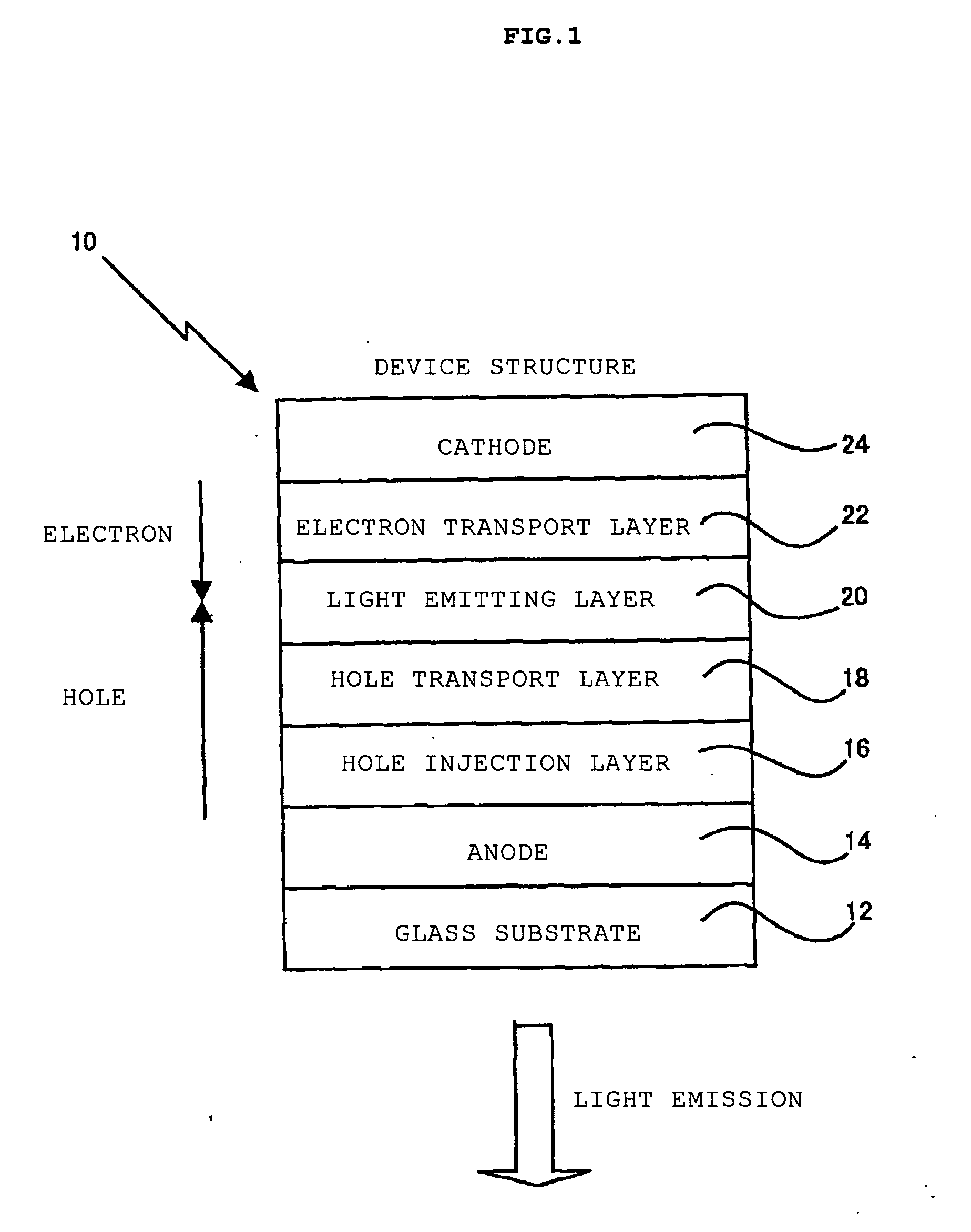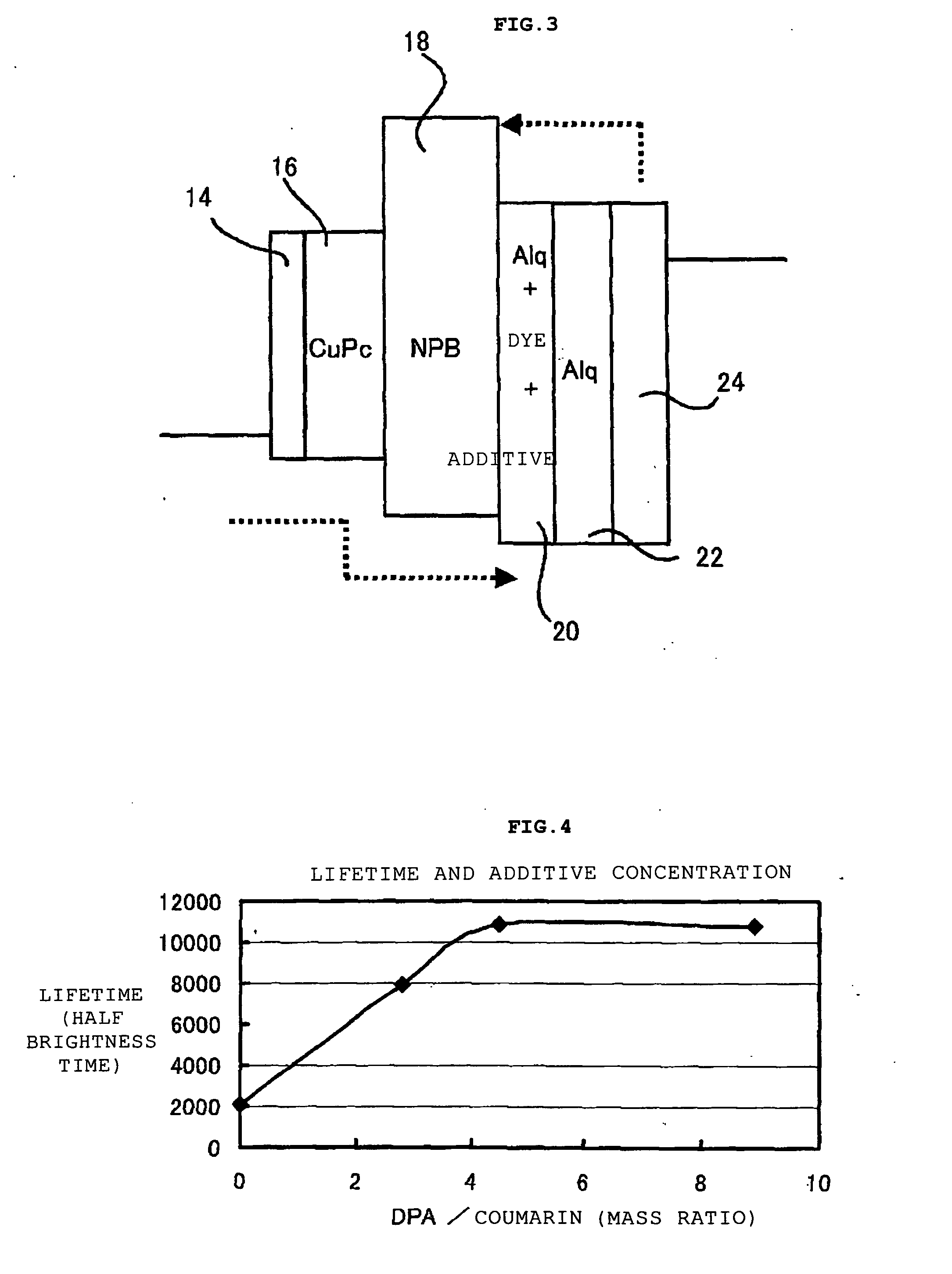Organic electroluminescence device and method of manufacture
- Summary
- Abstract
- Description
- Claims
- Application Information
AI Technical Summary
Benefits of technology
Problems solved by technology
Method used
Image
Examples
examples
[0059] Hereinafter, the present invention will be described with specific examples. The present invention is not limited by examples described later. Table 2 shows compositions used in the examples.
examples 1 to 4
[0060] Organic EL devices were formed as shown in FIG. 3. Each organic EL device shown in FIG. 3 was produced in the following manner. First, copper phthalocyanine was evaporated as the hole injection layer to a thickness of 10 nm on a glass substrate with an ITO film deposited as the anode. α-NPB was then deposited thereon to form the hole transport layer with a thickness of 30 nm. On the formed hole transport layer, Alq3, 1 mass % of coumarin 6, and about 3, 5, or 9 mass % or none of 9,10-diphenylanthracene (DPA) to be the triplet quencher were evaporated from different sources and were deposited into the light emitting layer with a thickness of 30 nm. Subsequently, Alq3 was deposited thereon to form an electron injection layer with a thickness of 30 nm. After LiF was evaporated to about 0.5 nm, Al was evaporated to form the cathode with a thickness of 200 nm. Lead lines are attached to the anode and cathode of the produced organic EL device by using silver paste and connected to ...
examples 5 to 8
[0065] Similar experiment was carried out with the amounts of dye and additive changed as shown in Table 2, and good results were obtained.
[0066] As described above, according to the present invention, the luminescence lifetime of the organic EL device can be increased, and it is possible to provide an organic EL device with longer lifetime and good display properties.
TABLE 2S1AddedS1AddedEnergyAmountEnergyAmountExampleDye(kJ / mol)(mass %)Additive(kJ / mol)(mass %)Example 1coumarin 626019,10-diphenylanthracene3040Example 2coumarin 619,10-diphenylanthracene3Example 3coumarin 619,10-diphenylanthracene5Example 4coumarin 619,10-diphenylanthracene9Example 5rhodamine1811rubrene22136GExample 6rhodamine1rubrene56GExample 75,7-dimethoxycoumarin33912-naphthyl2′-3591naphthaleneExample 85,7-dimethoxycoumarin12-naphthyl2′-2naphthalene
PUM
| Property | Measurement | Unit |
|---|---|---|
| Bond energy | aaaaa | aaaaa |
| Bond energy | aaaaa | aaaaa |
| Absorption edge | aaaaa | aaaaa |
Abstract
Description
Claims
Application Information
 Login to View More
Login to View More - R&D
- Intellectual Property
- Life Sciences
- Materials
- Tech Scout
- Unparalleled Data Quality
- Higher Quality Content
- 60% Fewer Hallucinations
Browse by: Latest US Patents, China's latest patents, Technical Efficacy Thesaurus, Application Domain, Technology Topic, Popular Technical Reports.
© 2025 PatSnap. All rights reserved.Legal|Privacy policy|Modern Slavery Act Transparency Statement|Sitemap|About US| Contact US: help@patsnap.com



